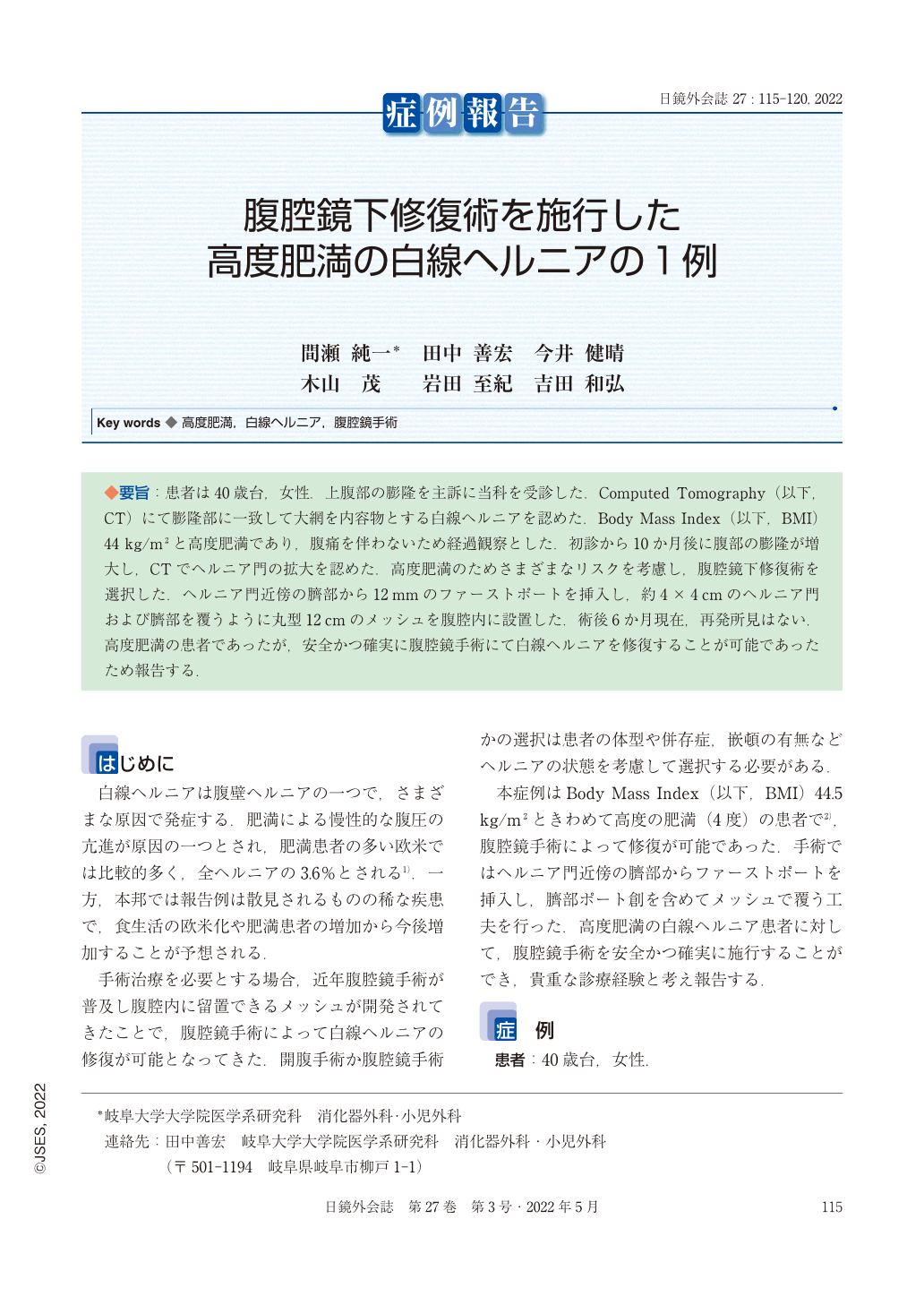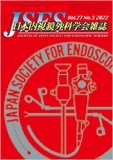Japanese
English
- 有料閲覧
- Abstract 文献概要
- 1ページ目 Look Inside
- 参考文献 Reference
◆要旨:患者は40歳台,女性.上腹部の膨隆を主訴に当科を受診した.Computed Tomography(以下,CT)にて膨隆部に一致して大網を内容物とする白線ヘルニアを認めた.Body Mass Index(以下,BMI)44kg/m2と高度肥満であり,腹痛を伴わないため経過観察とした.初診から10か月後に腹部の膨隆が増大し,CTでヘルニア門の拡大を認めた.高度肥満のためさまざまなリスクを考慮し,腹腔鏡下修復術を選択した.ヘルニア門近傍の臍部から12mmのファーストポートを挿入し,約4×4cmのヘルニア門および臍部を覆うように丸型12cmのメッシュを腹腔内に設置した.術後6か月現在,再発所見はない.高度肥満の患者であったが,安全かつ確実に腹腔鏡手術にて白線ヘルニアを修復することが可能であったため報告する.
The patient was a woman in her 40's who presented to our department complaining of abdominal distension. Computed tomography (CT) showed a white line hernia with omental fat. She was extremely obese (Body Mass Index, 44.5kg/m2) and did not have abdominal pain, so she was followed up conservatively. Her abdominal lump increased and CT showed an enlargement of the hernial orifice, 10 months after the first examination. Laparoscopic repair was performed because of extreme obesity and possible related risks. A 12mm first port was inserted from the umbilicus near the hernial orifice. A round 12cm mesh was placed intraperitoneally to cover the hernial orifice (measuring approximately 4×4cm) and the umbilical region. There were no recurrences at 6 months postoperatively. We report the case of extremely obese patient with linea alba hernia who was able to undergo laparoscopic linea alba hernia repair safely.

Copyright © 2022, JAPAN SOCIETY FOR ENDOSCOPIC SURGERY All rights reserved.


